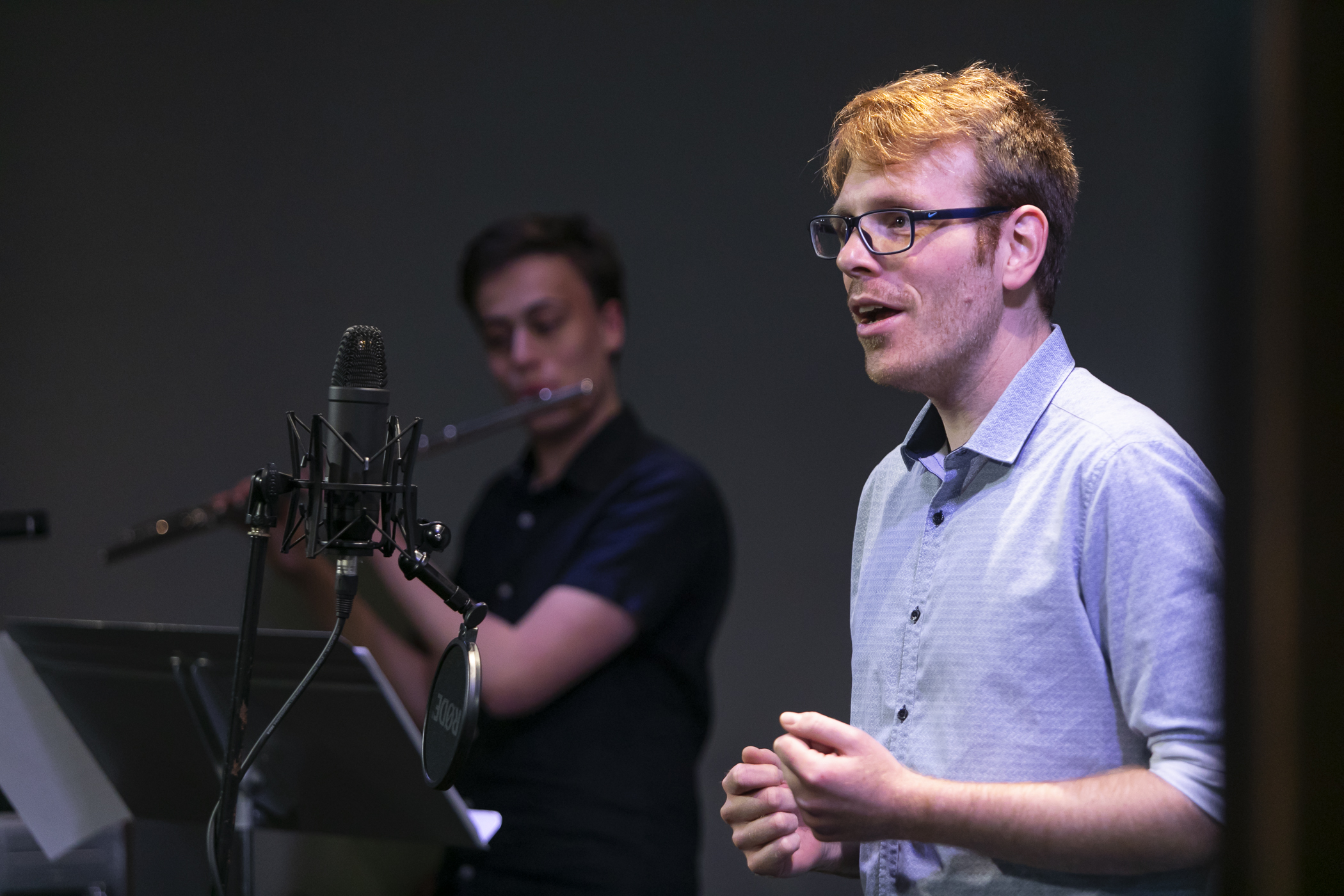How recording your singing lessons can speed up your progress
During my singing training, I recorded every lesson, using a heavy old cassette recorder. Later, I’d listen back and mostly, it drove me nuts, itching to fix this sound, fix that move, change that vowel, get that consonant out of the way, and oh! That weak breath control! It made me wonder why I pursued singing if I sounded so ordinary.
There are many benefits to recording your singing lessons and practice – once you’ve overcome the awkwardness of hearing your own voice.
Firstly, don’t judge your sound based on your smartphone’s audio
Most smartphones or tablets can’t accurately capture the sound of your voice. Their microphones compress the audio, so high notes lose their ringing tone and lower notes are bland. Attaching an external microphone can produce a more realistic sound, but the point is to enhance your practice and progress, so using your device’s inbuilt mic is better than not recording at all.

Photo by Bagus Hernawan from Unsplash
Why record your singing lessons and practice?
For beginner singers, listening back to your recorded lessons helps you learn accurate pitching. Sometimes in your lesson I will sing with you, because I want you to match my pitch, and when you listen back, you will hear if you are or not. As you progress, you learn to detect other details such as breath set up, and changes required for correct vowel and consonant sounding.
Recording promotes a methodical approach to singing practice
When we do traditional lessons and practice – exercises, vocalise, and your songs – your mind is likely swimming with lots of information at any one time. Part of this constant internal chatter is you instructing yourself: how to execute a phrase, the exercise, or section of a song. Essentially, we just want to sound okay as we get from phrase to phrase, or exercise to exercise, without stopping. As a result, you might miss some details.
By recording small sections of a song, or attempts at an exercise, you notice these details. For example, a consonant that is not sounding, leaving the meaning of a phrase unclear; or your breath flow may not be well set up at the start of a phrase and your sound weakens toward the end. You may hear little pitch or rhythmic inaccuracies.
Try these:
- Place the recording device away from your mouth, not close by.
- You can record an entire song or group of exercises, but working on one small section is better. One or a couple of phrases only.
- Have a notebook ready. Document what you hear at the problem spots. Maybe you hear a vowel sitting back in the throat. Next, write a solution to the problem: play around with air flow and feel of vowel position until I find the better sound.
- Choose one problem to work on.
- Re-record the section.
- Listen again. Was the problem fixed?
At first, you will find more problems than solutions, but eventually you will find the solution and get better at discerning the sound you’re after. Firstly, try solving a musical problem: rhythm, pitch, dynamics. Then move to expressive issues: phrasing, articulation, breath flow.

Celine labelling her lesson audio.
Video recording helps you address body and facial movements
Up the ante by watching yourself back singing on video! As daunting as it sounds, video is helpful to identify problems with your posture and body movement. You may sing a phrase superbly, but if your face lacks expression to match the words, you’ll mislead your audience.
Use the same audio recording tips above, but focus on visual details, such as where you hold unnecessary tension in your body and how this affects your sound. Your solution may not just be musical, but one that addresses body, facial and mouth movement.
Self-recording does get easier, more focused, and is an efficient way to find solutions. I recommend you keep your audio and video recordings, to hear and see your progress. The solutions you find ultimately improve your performance skills, and build your confidence as a singer.
Kathleen Connell’s singing lessons are structured around encouraging their recording, to enhance your practice and development. Browse the in-person or online options, or call 0402 409 106.




